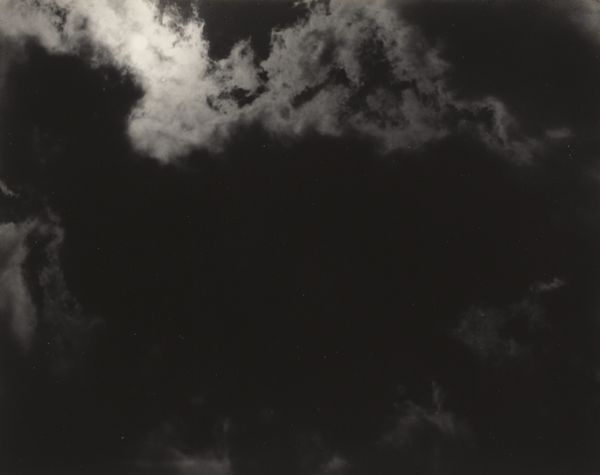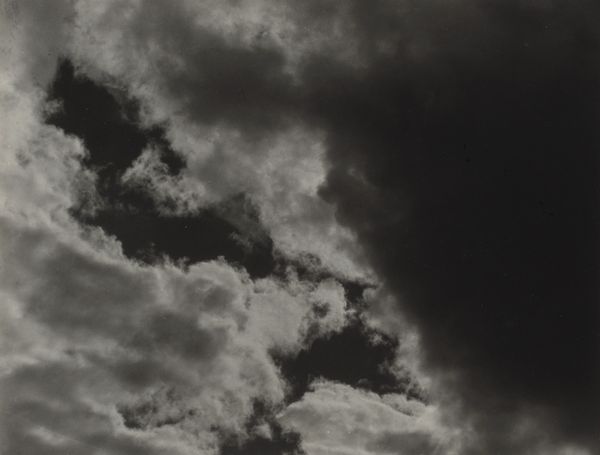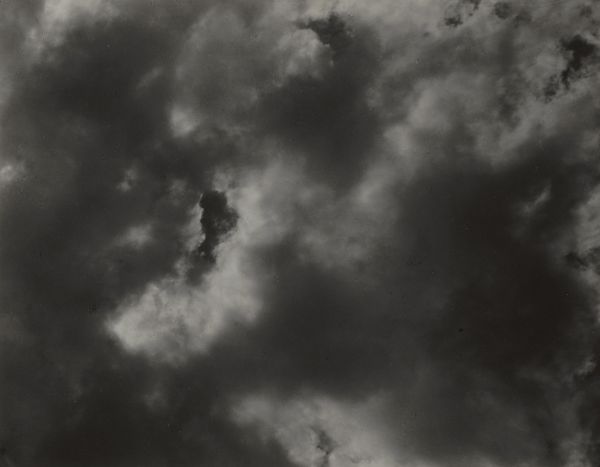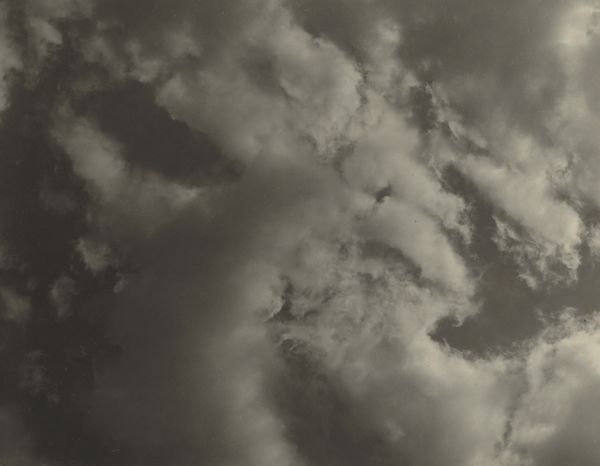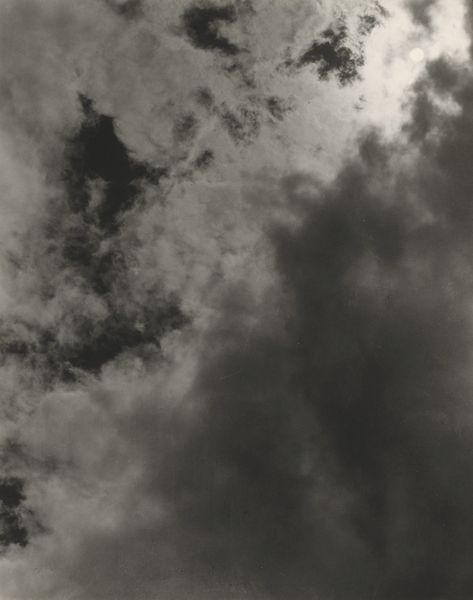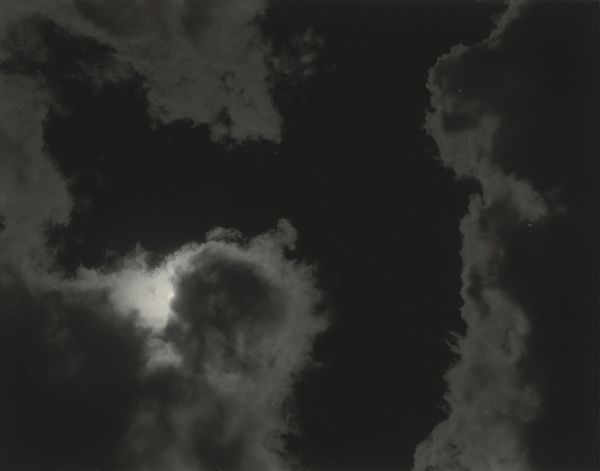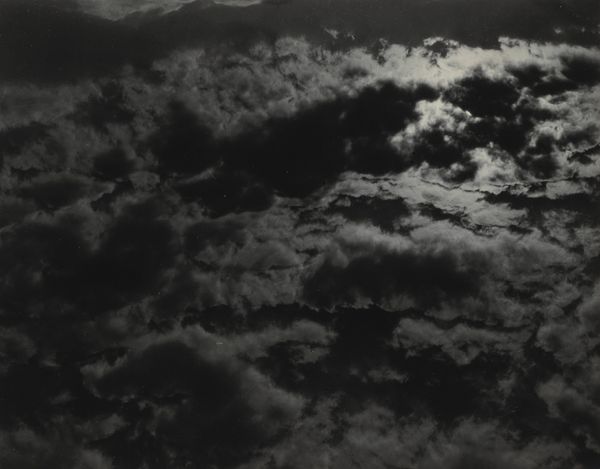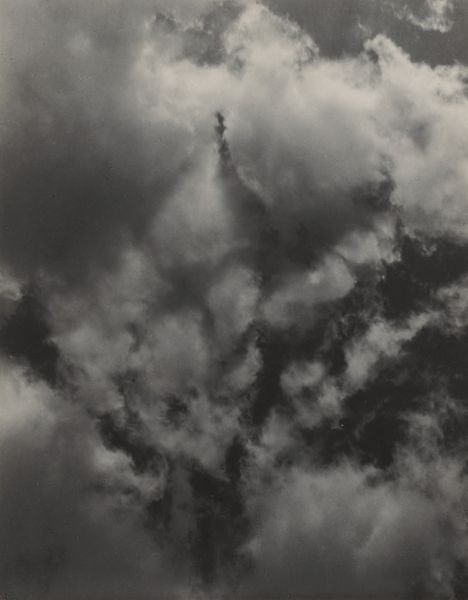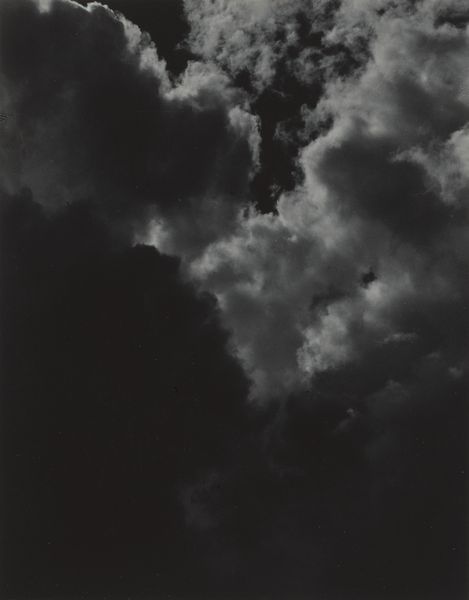
photography
#
cloudy
#
natural shape and form
#
natural formation
#
snowscape
#
pictorialism
#
landscape
#
photography
#
low atmospheric-weather contrast
#
geometric
#
monochrome photography
#
gloomy
#
fog
#
abstraction
#
modernism
#
mist
#
monochrome
#
shadow overcast
Dimensions: image: 9.3 x 11.9 cm (3 11/16 x 4 11/16 in.) sheet: 10.1 x 12.6 cm (4 x 4 15/16 in.) mount: 34.2 x 27.5 cm (13 7/16 x 10 13/16 in.)
Copyright: National Gallery of Art: CC0 1.0
Editor: Here we have Alfred Stieglitz's "Songs of the Sky B2," created in 1923 using photography. Looking at this cloudscape, I'm struck by its abstract quality. What exactly are we meant to take away from this piece? Curator: It's fascinating to consider the social context of photography's acceptance as art. Stieglitz was actively pushing for its recognition. When viewing Stieglitz’s work through a materialist lens, the concept of "straight photography" becomes key. Editor: Straight photography? Curator: Yes, straight photography prized the qualities unique to the medium. No soft focus, manipulation, or retouching. He presented the photographic process, its materials—the film, the paper, the developing chemicals—as fundamental to the artwork. Do you think Stieglitz successfully challenged those traditional art boundaries with these images? Editor: It seems like he used clouds as a canvas, trying to elevate photography using the inherent qualities within the material. By not manipulating it, it becomes a testament to what the materials are actually capable of doing. That's a very interesting approach. Curator: Exactly. In "Songs of the Sky B2," consider the labor involved. Each photograph demanded Stieglitz's close attention to materials, to the camera’s mechanics, and the chemistry of the darkroom. Editor: That's so true, viewing art through the materials it uses certainly creates a unique and insightful perspective. Thanks! Curator: Absolutely, it's vital to appreciate art in all its production and process.
Comments
No comments
Be the first to comment and join the conversation on the ultimate creative platform.

